School Branding Blog
Public School Rebranding: On a Budget (2025)

Related Resources: school branding strategy • visual identity design • school district branding • brand audit checklist • school mascot design • school marketing design • brand guidelines template • school branding examples • free quote • brand assessment • school branding psychology • school colors guide
What is Public School Branding?
From outdated websites to clip-art logos, it seems that most public schools utilize less than stellar branding materials. This isn’t just a stereotype, either. Do a quick Google Image search or spend some time visiting your counties’ websites, and you can instantly see for yourself.
So what? We’re a public school. We’re not made of money.
Yet competition for students is increasing all the time. What’s more, as parents are increasingly exposed to sophisticated branding materials from for-profit organizations, they come to expect the same from non-profits—whether this is fair or not.
Understanding how school branding influences parent choice is crucial for public schools competing for enrollment. Research shows that 89% of parents start their school search online, forming impressions within seconds of encountering your brand materials.
Need help revitalizing your school’s brand on a public school budget? Our school branding strategy service includes community stakeholder engagement, board-ready proposals, and phased implementation that fits your budget cycle. Request a custom proposal with pricing options for your district.
The good news for you and your school is that the quality of public school branding is quite low across the board. Therefore, you need only make marginal improvements to reap big rewards. For instance, if you obtain permission to transfer your school’s website to a modern CMS, you’ll enable parents to navigate your site easier, which will set you apart from the pack.
One change, big results.
Even though you’re a public institution and not a for-profit organization, it can be helpful to think of yourself as such when it comes to branding. We’ll do so throughout this guide to better illustrate how effective public school branding can translate into higher enrollment rates and higher teacher morale.
Branding – A Definition
Let’s pause for a moment to define ‘brand.’
A brand is a tangible and intangible presentation of who you are as an organization.
The tangible: letterhead, logo, mascot design, website, brochures, and other materials.
The intangible: your reputation, the performance of your students, outreach to parents, and much more.
These two combine to form your brand. As you can see, branding is not simply about creating nifty graphics or designing a stellar mascot. It’s about telling a story that conveys your values, and it’s about connecting with people.
It’s everything you do to present yourself to parents as a quality institution. Your branding is your first and biggest opportunity to tell your story to the people you serve.
Effective branding helps a school to:
• Have cohesive visual branding and messaging
• Communicate effectively, in a way that best represents the school district
• Clearly communicate who you are and what you’re about to staff, students and parents
• Clarify your mission and what you stand for
What Branding Is Not
The terms “brand” and “branding” are misused by many in the marketing and advertising sphere. Additionally, these terms are thrown around by salespeople who have a vested interest in people buying a product or service. The term ‘branding’ was originally used exclusively by professionals working with large corporations, but it has since entered the vernacular and is used in casual conversation.
It’s not uncommon to hear people saying, “My favorite brand is X.” Or, “ I hate that brand.” No doubt the advent of the Internet has a lot to do with the term becoming more commonplace. But whatever the root cause, misuse of and confusion about the term has led more than one business astray.
As a school principal, a Public Information Officer, Chief Information Officer, or similar, you’re not a business owner per se, but many of the same principles apply. Look at this example of a school that updated its logo mascot that turned the perception of the school around.
Your brand is the sum collection of perceptions that consumers have about your product. It is the sum of the customer experience. In other words, it has a lot to do with your reputation. In the process of building an awakened brand, you will employ several tools. But these tools, such as website, logo, email messages, and brochures are only part of the branding process.
A Brand Is Not…
#1 A Logo Design
An image can capture values and culture, and it can imply qualities, such as honesty and integrity. No wonder, then, that some companies spend over a million dollars on their logos. A well-done school logo design is instantly recognizable, and it can be a powerful marketing tool. Additionally, a logo lays the groundwork for other branding materials since it sets the color pallet.
All that said, a logo on its own is not a brand. A logo becomes most effective when there is feeling behind it—when consumers associate the logo with the company in some positive way. The famous Nike checkmark is a solid, simple design. But if you’d never heard of Nike and were coming across their marketing for the first time, their logo would just a be swell little checkmark, wouldn’t it?
It wouldn’t mean much to you until you’d had some experience with the company and its products. A good logo design promotes nostalgia over time, but it’s not the brand itself.
#2 A Mission Statement
The equivalent here in the business world is a position statement. A position statement lays out how a company wants the public to view them. British Petroleum wants to be seen as economically friendly. So they famously changed their logo in 2000 and issued numerous position statements about their commitment to developing green technologies.
But a position or mission statement is not a brand. It won’t directly influence how you interact with consumers, and it won’t necessarily change their view of you.
If your school talks a good talk about being the best or about offering the highest quality education while your other branding elements—think logo or website—are from the 1980s, your mission statement will have minimal impact.
#3 A Brand Name
Your name is definitely one of the first impressions people will have, but a name in and of itself is not a brand.
When entrepreneur Bob Parsons founded GoDaddy in 1997, he may have been tempted to give it a name that was more relevant to what the company offered—say something with the word ‘domain’ in it. But he didn’t. Today, when most consumers hear ‘GoDaddy,’ they immediately think of domain names, or, at the very least, Internet technology.
That company name is an important part of their overall brand, but the name itself is not responsible for their brand recognition. That comes down to the consistent quality of service, smart marketing campaigns, and competitive pricing.
#4 Your Tagline
A tagline is a short phrase or slogan that encapsulates what you’re all about. Companies use taglines to create a favorable impression in the minds of consumers.
Famous taglines include:
• “I’m lovin’ it” —McDonald’s
• “Finger lickin’ good” —KFC
• “Taste the rainbow.” —Skittles
• “Snap! Crackle! Pop!” —Rice Krispies
• “Eat fresh.” —Subway
But like your logo, your name, or your mission statement, your tagline is not your brand.
#5 Your Website
Your website is where parents and students go to find additional information about your faculty, your schedule, and the courses you offer. It certainly is not your branding.
However, since many public school websites use outdated CMS technology and design elements, updating your website is one way you can very easily stand out.
Here are a few examples of some really dated school websites:
https://www.crosscountyschools.com/
http://www.habershamschools.com/
And the list goes on. Public school websites are so bad that it makes me cringe.
Your Brand Is Bigger
Bottom line: your brand is bigger than any of these things.
When evaluating their branding needs, companies consider a few basic questions. Of course, this doesn’t translate directly to public education. But if you’re thinking about optimizing your elementary school branding, asking yourself these questions is the place to start.
What does the market look like right now?
Translation: how many competing elementary or middle schools do you have in your district? Do you expect competition to increase in the future? Is your current reputation such that increased competition from new public schools could make it harder for you to attract new faculty?
Who are your customers?
Translation: How many students are in your district? How many families? What is the overall population? Have there been any major demographic shifts over the last decade that suggest your district might need new public schools soon?
How is your brand positioned in the market?
Translation: What is your reputation in the community? Would parents recommend your school to a new family who has just moved to the county? How are your test scores compared to other schools? Graduation rate?
How do your customers describe their experience with your company?
Translation: What do parents say about your school and its faculty? What complaints do they have? Do people send their kids to your school with confidence, or because they have no other choice?
What is the gap between your purpose statement and the actual customer experience?
Translation: Compare the results you’re actually getting in terms of test scores and graduation rate to your mission statement. How does it stack up? How are you doing in terms of attracting quality faculty?
Do Public Schools Need Branding?
You may not be accustomed to thinking of your public school as having something as weighty as a ‘brand.’ But think about it: what is a brand but the summation of the qualities you want to be known for? Kellogg’s wants to be known for quality cereal products. Mercedes wants to be known for fine engineering. You want your school to be known for quality education.
Establishing and nurturing a school brand can help you achieve that goal. According to the paper School Brand Management: The Policies, Practices, and Perceptions of Branding and Marketing in New York City’s Public High Schools, market-based choice initiatives have become an important tool in education reform. In New York City alone, over 250 high schools operate, most having opened in the last 30 years. (Source)
Many students in these school districts do not have a zoned or neighborhood school, which gives parents a greater choice. With choice, comes competition. The idea is that schools that do not attract students will fail and will be replaced by newer schools.
Consider, then, how schools may benefit from paying closer attention to branding.
Your school’s brand is its calling card. It’s how you’re identified in the community, and it’s how people remember you. Think of all the things that identify a school: logo, mascot, and school colors. These markers evoke a range of emotional reactions in people, from nostalgia to a sense of identity and belonging.
For a parent moving into your area, your branding is the first thing they’ll encounter—whether on a brochure, the school building itself or on your website. If you’re having to compete for students or may have to in the future, optimizing your branding is more important than ever.
In addition, solid branding helps your school to:
• Create an overall personality that aligns with your core purpose and values.
• Build trust
• Project professionalism
• Show parents that you take yourself and your responsibilities seriously
• Attract quality teachers
• Tell your school’s story
Examples of school logos that we have created for our clients
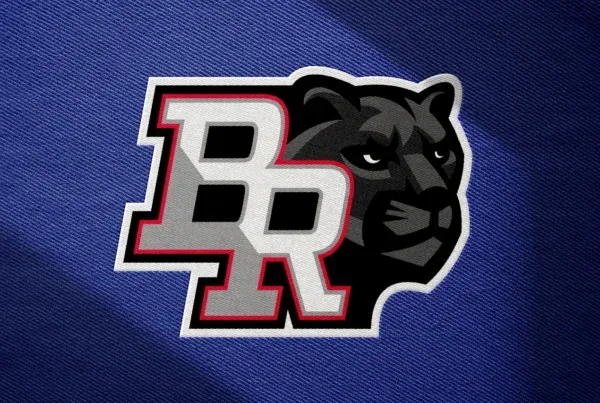
Bridgewater-Raritan High School Logo Design
Bridgewater-Raritan High School Logo Design

Henderson Collegiate Strategy & Complete Branding
Henderson Collegiate Strategy & Complete Branding

Woodbridge School District Mascot Logo & Branding
Woodbridge School District Mascot Logo & Branding
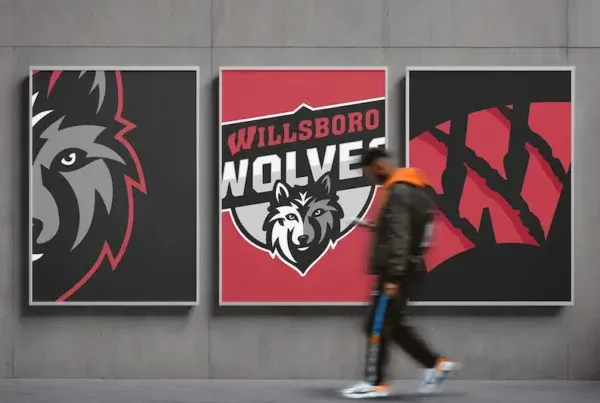
Willsboro Central School Mascot Logo & Branding
Willsboro Central School Mascot Logo & Branding
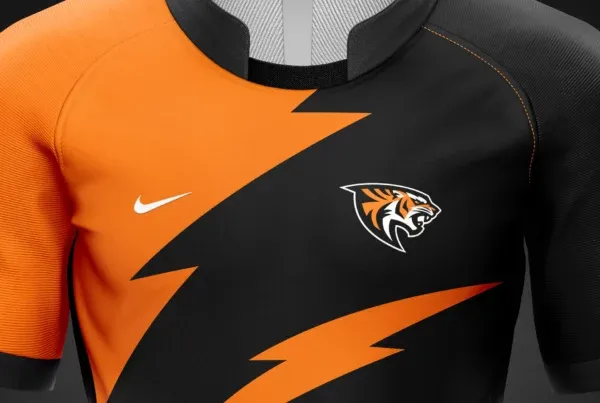
Republic School District Strategic Branding
Republic School District Strategic Branding
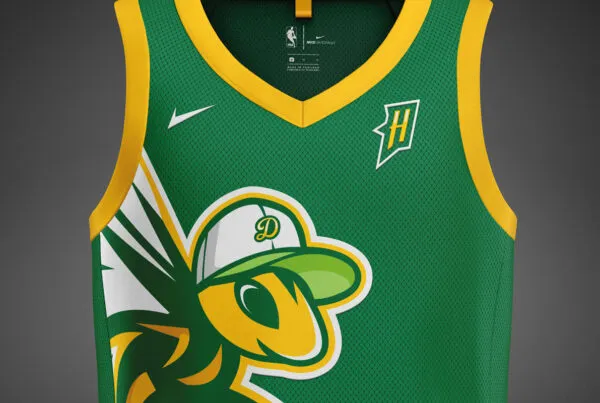
Dexter Middle School Mascot Logo Design
Dexter Middle School Mascot Logo Design
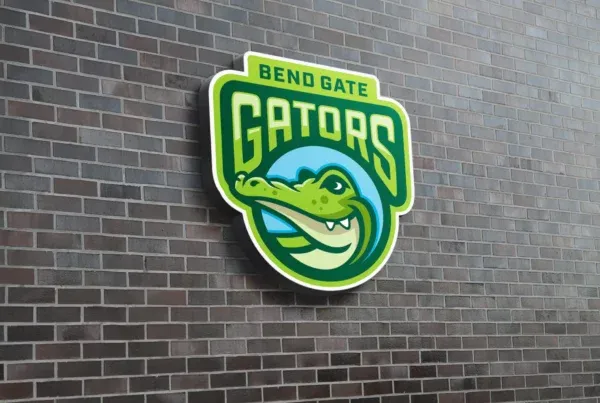
Bend Gate Elementary Mascot Logo Design
Bend Gate Elementary Mascot Logo Design
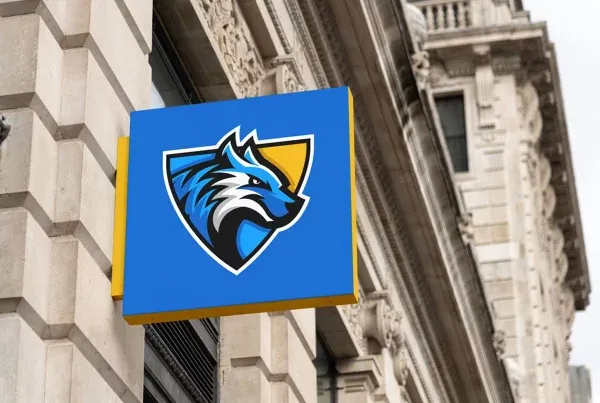
North Central Michigan College Mascot Design
North Central Michigan College Mascot Design

Cougars Elementary School Mascot Design
Cougars Elementary School Mascot Design
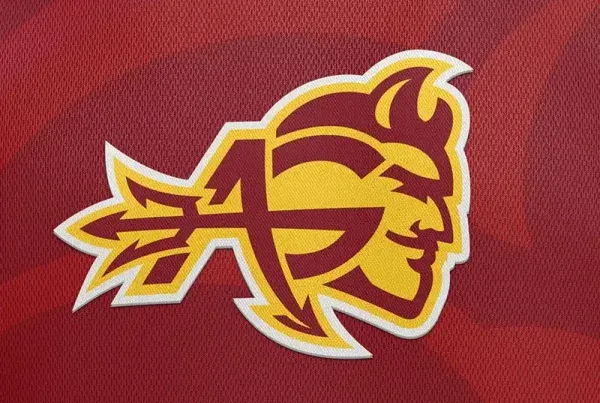
School District Mascot Logo Design & Brand Identity
School District Mascot Logo Design & Brand Identity

Jepson Jaguars School Brand Identity
Jepson Jaguars School Brand Identity

Simi Valley High School Brand Identity
Simi Valley High School Brand Identity
Tangible Benefits of Proper Branding
So far, you may have come away with the impression that branding is a somewhat esoteric construct—great in theory, but far from useful in practice. On the contrary, strategic brand building yields concrete benefits, many of which can translate into stronger enrollment rates.
#1 Solid Branding Increases Recognition
If parents increasingly have a choice where they send their children to be educated, it follows that you’ll want to stand out. Branding is the major tool that companies use to set themselves apart from their strongest competitors. So too, must you.
You have one advantage over the for-profit business in this regard in that your organization is strongly rooted in the community. Therefore, word of mouth can either be your biggest tool, or it can be your undoing.
One way you can increase recognition is by investing some resources in a solid logo as you can see in this example. As mentioned, many school logos are based on clip-art and are not unique. By taking the time to create a logo that truly reflects your values and identity, you will send a strong message to parents.
#2 Branding Creates Trust
Just as people are more likely to purchase from a business with polished branding materials, parents are more likely to entrust their kid’s education to a school that gives thought and care to their own branding.
Optimizing your school’s branding will pay dividends in the long run. A great example is an awesome logo we created for this middle school.
When you overhaul your logo and website, you project a sense of confidence and prosperity that will resonate with parents. You send the reassuring message that your school has the resources to provide high-quality education.
#3 Branding Inspires Faculty
One of the main problems faced by public schools is the lack of teacher morale. The Center for American Progress, a Washington D.C. think tank, released a report recently that declared that teachers really aren’t all that dissatisfied with their jobs, despite, apparently multiple polls that show morale has plummeted. In this post, Barnett Berry looks at how much sense that report really makes.
There are a few solid strategies for dealing with this crisis:
- Build a community for teachers. Foster an atmosphere of teamwork and common purpose.
- Empower teachers to solve problems. The administration includes teachers in the problem-solving process so they don’t feel alienated.
- Increase the frequency of fun faculty social interactions. Teaching can be a lonely profession. Fun social events give teachers a break from drudgery and an opportunity to interact in person.
But creating new sales materials can also improve teacher morale, especially if you allow teachers and staff plenty of input during the process. A refined school identity can revive dwindling teacher enthusiasm.
The effect doesn’t end once the new branding materials are completed, either. Modern branding materials can encourage teachers to ensure that the school’s performance matches the quality of the new branding.
#4 Branding Increases Word of Mouth Referrals
Earlier, we hinted that word of mouth would be a powerful tool for your school—and it can be. As much as the awesome identity itself. If you suspect that you’ll soon have to compete with another school for students, get started right away. Don’t wait. Give parents a reason to talk to each other about your school and make sure they have good things to say.
Sleek, modern branding materials are a good place to start. Consider scheduling the release of your updating branding so that it coincides with a new, innovative program or other innovation for maximum benefit.
Which Branding Mistakes Do Schools Make Often?
Unfortunately, beyond the clip-art logos and Web 1.0 websites, many, many school districts make fundamental branding mistakes. In this section, we’ll cover the most grievous of them.
Remember: branding has a tremendous impact on how consumers—think parents and students here—view your school. Even the best product in the world can flop spectacularly if the branding is off. Remember the Got Milk? slogan and campaign? It didn’t go down so well in Latin American countries, where ‘Got Milk?’ translates into, ‘Are you lactating?’
Fortunately for the California Milk Processor Board, this gaffe didn’t cause a crash in the demand for milk, but it was a slip-up they could have easily avoided.
#1 You Don’t Create a Custom Logo
It’s tempting to create a logo design based on clip-art and be done with it. And while professional logo designers may appear to be expensive for most public schools, there are agencies that offer logo services at reasonable rates. GoFundMe and similar sites make it possible for non-profits to raise funds from the community—though you’ll want to check your local bylaws.
#2 You Think of Your Brand as Just Your Logo
You don’t want to go too far in the other creative direction, either. A brand is about more than just a logo, mascot, name, or colors. While you definitely want recognizable graphics associated with your school, your branding is much more than these design elements. Your school’s brand encompasses the associations, perceptions, and experiences that people have with your school at every touchpoint.
#3 You Present an Inconsistent Identity
To build trust with the community, you must convey a steady, consistent image. Your goal should be to present consistent branding across the board. The logo on your website should match the logo on school materials. If you’ve changed mascots, make sure that the old mascot is not referenced in any of your current materials.
#4 You Change Your Branding Materials Often
For-profit businesses must concern themselves with remaining relevant to modern consumers, but for non-profit organizations, the priority is the opposite. You want to build a legacy that will stand the test of time. This means, of course, that if you’re considering a branding change, you should absolutely get it right the first time.
Logos, mascots, and other branding elements that change every few years will confuse parents and students alike.
#5 Your Logo Looks like Every Other Logo in the District
Okay, well, maybe not exactly the same. But this is an issue we’ve seen with many school’s branding. Consider how a unique, high-quality logo will make you stand out from the crowd in your own district. Meaning a logo that contains no clip-art elements and no stock art.
#6 You Don’t Think About Your Audience
Who is your audience in this case? It’s not the kids. It’s the parents. When thinking of a branding change, think about what a parent wants from a school. Then infuse your branding message with those qualities.
To conclude, when you are branding public schools or even higher education, a private school, or a business school, remember to think of the emotional connection between the students and community and create a brand strategy that aligns with the target audience. Make sure to capture the school spirit that can be communicated to the existing audience as well as prospective students.
I hope you’ve enjoyed this concise guide to school branding. Do you have any school branding horror stories to share with me? Let me know in the comment section below!
We Build and Manufacture Mascot Costumes
A professionally built mascot costume creates unforgettable moments at games, rallies, and community events.

See Full Details →
Design to Delivery
We manage everything
6-12 Week Delivery
In time for your season
Safety First
Ventilation & visibility
$5k-$10k Range
Professional quality
About Mash Bonigala
Mash Bonigala is the Founder & CEO of School Branding Agency. Over the past 15 years, he's helped 250+ K-12 schools transform their brand identity and drive enrollment growth. From charter schools to public districts, Mash specializes in creating mascot systems and brand strategies that rally communities, boost school spirit, and convert prospects into enrolled families. Schedule a Zoom call to discuss your school →
Mascot logo design
Get an enrollment-ready mascot your community loves
Start with our mascot logo design service. We’ll craft a distinctive, on‑brand mascot system and rollout plan tailored for your school.
Start your estimateRelated
Charter School Branding - Mascots & Identity (2025)
We help charter schools build mascots and identity systems that rally communities and support enrollment. See packages and proof.
View detailsRelated
School Mascot Costume
Premium school mascot costumes—designed for visibility, comfort, and durability. We design, prototype, and manage production so your performer can move, engage, and win crowds.
View details
